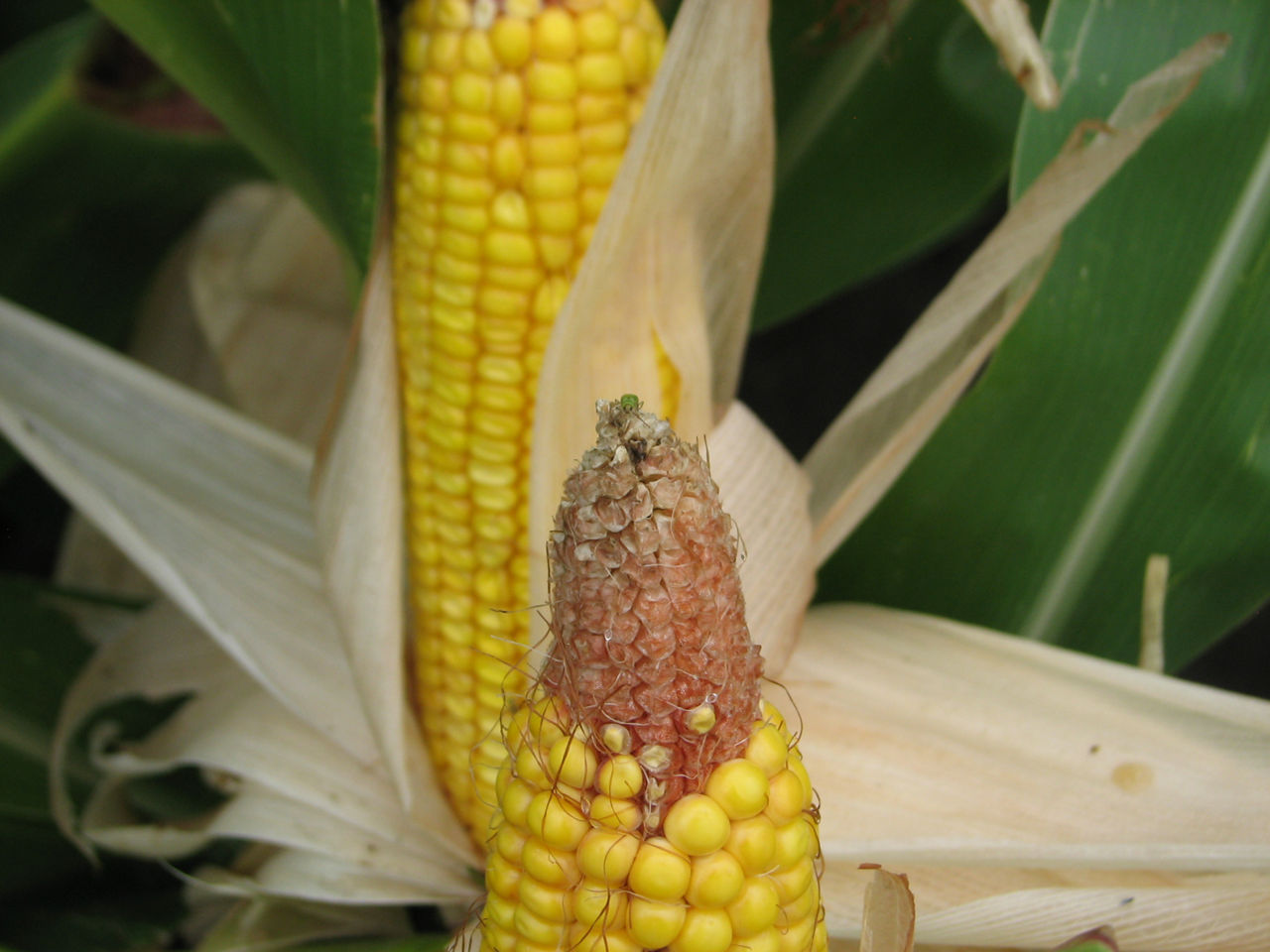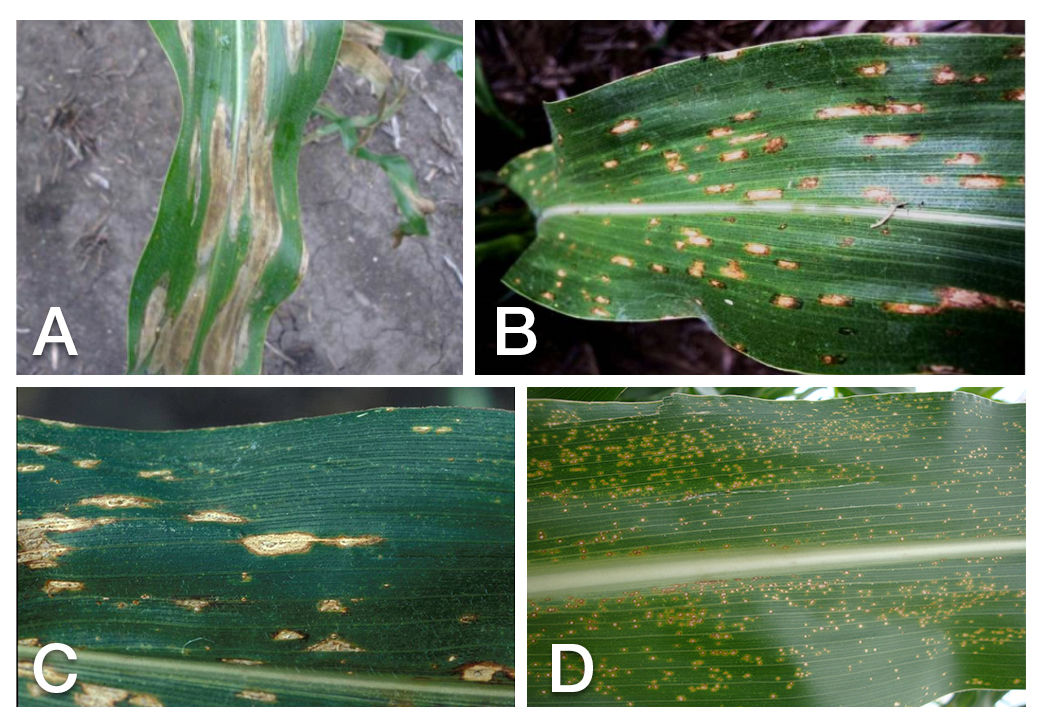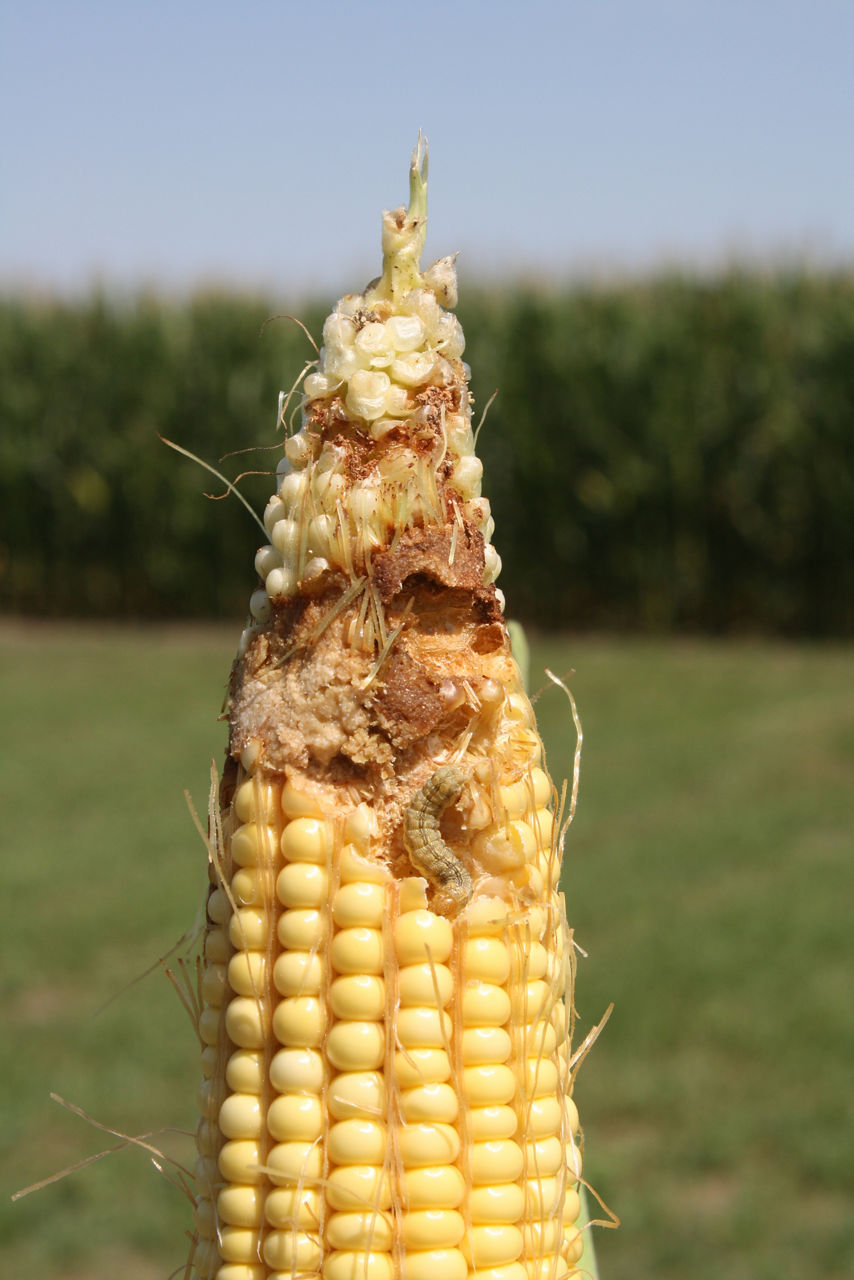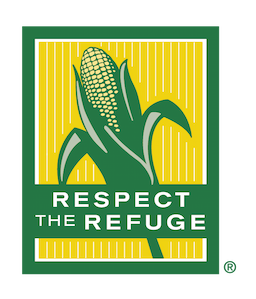10 MIN READ
Maximizing Corn Yield Potential
February 3, 2021
Yield potential is defined as the maximum production of a crop that can be achieved in a given environment. In most cases, the yield potential is theoretical as the crop must receive optimum levels of water and nutrients and be completely protected against all stresses that may reduce growth and impact yield. While weather is often the most overriding factor in determining how close to the yield potential a crop can get, there are several management decisions farmers can make to help ensure that the crop is placed in the best circumstances to achieve the yield potential.
Selecting the right corn product for the field and planting at the appropriate time, conditions and population is the first step in optimizing yield potential and should result in a uniform and vigorous corn stand.
Stress at critical corn growth stages (vegetative, pollination, and grain fill) should be controlled to maintain photosynthesis and yield potential.
Nutrient management and disease control can help reduce plant stress during critical growth stages.
Components of Yield1
The number of ears per acre, number of rows per ear, number of kernels per row, and the weight of each kernel are the components of yield. The interaction between these factors and the weather conditions, soil type, pest pressure, and available nutrients at specific times in the growing season can determine how close the yield of a particular field will be to the yield potential of the field.
Ears per acre. The number of ears per acre is determined by the seeding rate and the soil and environmental conditions at planting and germination. Factors during the growing season that can reduce the number of harvestable ears include hail, insect injury, greensnap, and stalk lodging.
Rows per ear. The number of kernel rows is determined by the 6th leaf stage (V6). Corn product genetics is a key determining factor for the number of potential kernel rows. However, plant stresses, such as drought, can reduce the final number of kernel rows.
Kernels per row. The number of kernels within a row are determined at approximately the 6th leaf stage (V6) but not finalized until tasseling (VT). The final number of ovules is set about one week before the silks emerge. Plant stress at this time (such as drought, nutrient deficiency, leaf disease) can reduce the number of ovules that develop. The number of ovules that are fertilized and retained determines the number of kernels. Kernel abortion can occur as late as the milk stage (R3) if resources are not sufficient.
Kernel weight. Kernel weight is largely determined between the blister (R2) and dent (R5) stages. If the plant is subjected to stress before R6, starch accumulation in the kernels is reduced, so the kernel weight will be lower.


Managing Outside Stress Factors
Producers who have been farming a field for several growing seasons are aware of the stress factors associated with a particular field or farm, but here are some suggestions that could be considered.
Field Preparation2
Fields with poorly drained soils can result in later planting, planting under less than ideal conditions and poor corn stands. Improving drainage can lower the risk of wet soils, soil compaction, loss of soil nitrate via denitrification that can result in poor stands of corn.
In fields with rolling topography and good drainage, soil moisture can be difficult to retain leading to plant stress. Tillage systems and cover crops can help increase water retention under these situations.
Avoiding soil compaction can reduce the risk of a poor quality stand, from the beginning of the season through full maturity. The field should not be worked when the soil is not fit and trips across the field should be minimized. Reduced tillage systems can reduce the number of trips across the field, but these systems can also result in soil compaction.
Crop residue, particularly in continuous corn systems, should be managed. In no-till or reduced tillage fields, row cleaners and trash sweeps on the planter can provide a clean soil surface over the seed furrow to help ensure even germination and seeding growth.
Corn Product Selection2
Extensive work over multiple years is completed to characterize corn products. Local Technical Agronomists will have a good understanding of performance for your area, including plant density recommendations. This information, coupled with an understanding of current product performance in Land-Grant University trials, can help with selecting a corn product that has demonstrated strong yield potential over a wide range of conditions. Land-Grant University trials are a good source of information about corn product performance across several locations with differing environmental conditions and soil types. Examining the yield data from corn product trials in your own geography can be helpful, but they may not contain a wide range of products from different companies. Dr. Robert Nielsen of Purdue University recommends selecting corn products that consistently yield no less than 90% of the highest yield in the trial, no matter where they are grown. As an example, if the top yield in a trial is 200 bu/acre, then consider only corn products that yield (200 x 0.90) 180 bushels per acre or more. After the products have been determined based on yield potential, then consider other traits, such as drought and disease tolerance and insect resistance packages.
Cropping System2
There is a tremendous amount of data that supports crop rotation as a method to increase yield potential in the subsequent corn crop. While many producers use a continuous corn production system, the addition of a single crop, usually soybean, in a one year rotation can result in higher yield potential. In continuous corn production systems, residue management is key to maximizing the yield potential of the field. Corn residue can reduce soil temperatures in the spring resulting in uneven emergence, herbicide interception, and serve as an overwintering site for corn diseases.
Fertility2,3
Maintaining adequate soil fertility and soil pH can reduce the risk of environmental stress that lowers yield potential.
Starter fertilizer. Starter fertilizers commonly contain nitrogen (N), phosphorus (P), and potassium (K), and depending on need, sulfur (S). Starter fertilizer has shown to increase early plant growth, particularly when planting in colder soils usually associated with early planting and reduced tillage systems with high residue loads. However, the use of starter fertilizer and final yield has been inconsistent in the Corn Belt. Iowa State University suggests including a starter fertilizer to help maintain yield potential when: 1.) planting occurs earlier than normal into cooler soils; 2.) planting into reduced tillage systems with high residue cover; 3.) planting is delayed due to lack of available P; 4.) planting into a continuous corn production system, especially in reduced tillage systems; and 5.) nutrients are not applied at adequate rates before planting.
Nitrogen. Ensuring adequate available N during peak uptake is critical to reaching the yield potential. Using practices that focus on efficient application of N can be used to help preserve N for use by the plant. Avoid fall applications without the use of a N inhibitor and apply at soil temperatures at 50° F, avoid broadcast urea-based N sources without incorporation or the use of urease inhibitor, and use side application methods that are more in line with plant use.
Disease Management
Seedling diseases can reduce the stand, which reduces the number of plants that produce ears. Foliar diseases can reduce photosynthetic capacity, lowering the number of kernels per ear and may result in stalk diseases lowering the number of harvestable ears. High quality seed treatments can help alleviate seedling diseases. Many corn products are tolerant to common foliar diseases, such as Northern corn leaf blight, grey leaf spot, and eyespot. Fungicides may be necessary to reduce the incidence of foliar fungal diseases. This is particularly true when the disease attacks a more susceptible corn product during the vegetative stage and the environmental conditions are conducive to further disease development. Please consult Managing Corn Diseases for more information on disease management.

Insect Management
Like corn seedling diseases, seedling insect pests can reduce stands and limit the number of plants that produce ears. Insect feeding on growing plants can reduce yield potential by limiting nutrient uptake from the roots (corn rootworm larvae), movement of resources in the stalk (European corn borer), reduce the number of kernels per ear by limiting pollination (Japanese beetles, corn rootworm adults), and reduce the number of kernels after pollination (corn earworm, fall armyworm, western bean cutworm). Feeding on leaf tissue can reduce photosynthetic capacity and lower yield potential. Insect feeding on the ear can also impact grain quality. Please review the Insect Management Help Center for help managing insects attacking corn.

Weed Management
Weeds consistently limit yield potential. Timely management and prevention of infestations are key to maximizing yield potential. Developing a weed management plan for each field that can incorporate cultural, mechanical, and chemical methods of control is the first step in managing weeds. Please consult the Weed Management Help Center for tips on managing weeds in corn.
Summary
Identifying and managing the yield limiting factors will help maximize corn yield potential on your farm. Challenges to maximizing yield potential will occur almost every growing season, but good planning can help limit the impact of those challenges.
Sources:
1Licht, M. 2017. Estimating corn yields using yield components. Iowa State University Extension. https://crops.extension.iastate.edu/cropnews/2017/08/estimating-corn-yields-using-yield-components.
2Nielsen, R. 2012. Corn Management for Extreme Conditions. Purdue University Extension. https://www.agry.purdue.edu/ext/corn/news/timeless/ExtremeCornMgmt.html.
3Mallarino, A. 2015. Starter fertilization sometimes boosts corn yield. Iowa State University Extension. https://crops.extension.iastate.edu/cropnews/2015/03/starter-fertilization-sometimes-boosts-corn-yield.
1010_S5
Seed Brands & Traits
Crop Protection
Disclaimers
- always read and follow pesticide label directions, insect resistance management requirements (where applicable), and grain marketing and all other stewardship practices. to review additional important information, click to open the menu below.expand_more
No dicamba may be used in-crop with seed with Roundup Ready® Xtend Technology, unless and until approved or specifically permitted, and no dicamba formulations are currently registered for such use in the 2024 season. Please follow www.roundupreadyxtend.com/xtendimaxupdates for status updates
Based on Court ruling and EPA Existing Stocks Order* on XtendiMax® Herbicide registration, Bayer has stopped its sale and distribution of XtendiMax® Herbicide. Visit our XtendiMax herbicide updates page to learn the latest www.roundupreadyxtend.com/xtendimaxupdates.
*Low-volatility dicamba products subject to the ruling include XtendiMax® herbicide with VaporGrip® Technology, Engenia® herbicide and Tavium® Plus VaporGrip® Technology herbicide.
The Preceon™ Smart Corn System, including short stature corn developed through traditional breeding, is expected to be available, subject to final commercialization decisions, for planting in the 2024 growing season.
Short stature corn developed through biotechnology is not currently available for commercial sale or commercial planting. Commercialization is dependent on multiple factors, including successful conclusion of the regulatory process.
This material may contain “forward-looking statements” based on current assumptions and forecasts made by Bayer management. Various known and unknown risks, uncertainties and other factors could lead to material differences between the actual future results, financial situation, development or performance of the company and the estimates given here. These factors include those discussed in Bayer’s public reports which are available on the Bayer website at www.bayer.com. The company assumes no liability whatsoever to update these forward-looking statements or to conform them to future events or developments.
*Commercialization is dependent on multiple factors, including successful conclusion of the regulatory process. The information presented herein is provided for educational purposes only, and is not and shall not be construed as an offer to sell, or a recommendation to use, any unregistered pesticide for any purpose whatsoever. It is a violation of federal law to promote or offer to sell an unregistered pesticide.
Bayer is a member of Excellence Through Stewardship® (ETS). Bayer products are commercialized in accordance with ETS Product Launch Stewardship Guidance, and in compliance with Bayer’s Policy for Commercialization of Biotechnology-Derived Plant Products in Commodity Crops. Commercialized products have been approved for import into key export markets with functioning regulatory systems. Any crop or material produced from this product can only be exported to, or used, processed or sold in countries where all necessary regulatory approvals have been granted. It is a violation of national and international law to move material containing biotech traits across boundaries into nations where import is not permitted. Growers should talk to their grain handler or product purchaser to confirm their buying position for this product. Excellence Through Stewardship® is a registered trademark of Excellence Through Stewardship.
XtendiMax® herbicide with VaporGrip® Technology has been classified as pesticide and must be used with VaporGrip® Xtra Agent (or an equivalent volatility reduction adjuvant). For approved tank-mix products (including VRAs and DRAs), nozzles and other important label information visit XtendiMaxApplicationRequirements.com. Applicators must check XtendiMaxApplicationRequirements.com no more than 7 days before application of this product for additional labeling, including state restrictions. Where applicable, users must comply with additional requirements found on this website.
ALWAYS READ AND FOLLOW PESTICIDE LABEL DIRECTIONS. Not all products are registered for use in all states and may be subject to use restrictions. The distribution, sale, or use of an unregistered pesticide is a violation of federal and/or state law and is strictly prohibited. Check with your local dealer or representative for the product registration status in your state.
Product Use Statement: Enlist E3® soybeans contain the Enlist E3 trait that provides crop safety for use of labeled over-the-top applications of glyphosate, glufosinate and 2,4-D herbicides featuring Colex-D® technology when applied according to label directions. Following burndown, the only 2,4-D containing herbicide products that may be used with Enlist® crops are products that feature Colex-D technology and are expressly labeled for use on Enlist crops. 2,4-D products that do not contain Colex-D technology are not authorized for use in conjunction with Enlist E3 soybeans. Warning: Enlist E3 soybeans are tolerant of over-the top applications of glyphosate, glufosinate, and 2,4-D. Accidental application of incompatible herbicides to this variety could result in total crop loss. When using 2,4-D herbicides, grower agrees to only use 2,4-D products that contain Colex-D technology authorized for use in conjunction with Enlist E3 soybeans. Always read and follow herbicide label directions prior to use.
YOU MUST SIGN A TECHNOLOGY AGREEMENT, READ THE PRODUCT USE GUIDE PRIOR TO PLANTING AND FOLLOW HERBICIDE RESISTANCE MANAGEMENT (HRM) REQUIREMENTS.
The transgenic soybean event in the Enlist E3® soybeans is jointly developed and owned by Corteva Agriscience and M.S. Technologies, L.L.C. ®™ Enlist, Enlist E3, the Enlist E3 logo and Colex-D are trademarks Corteva Agriscience and its affiliate companies.
Alloy™ and Connect™ are trademarks of M.S. Technologies, L.L.C., West Point, IA. Please read the M.S. Technologies, L.L.C. Use Restriction Agreement located at: - http://www.mstechseed.com/use-restriction-agreement/.
ALWAYS READ AND FOLLOW PESTICIDE LABEL DIRECTIONS. FOR COTTON TREATED FOR MARKET YEAR 2024, EACH ACCELERON® SEED APPLIED SOLUTIONS OFFERING is a combination of separate individually registered products containing the active ingredients: BASIC Offering: fluoxastrobin, prothioconazole, metalaxyl, myclobutanil, and penflufen. STANDARD Offering: fluoxastrobin, prothioconazole, metalaxyl, myclobutanil, penflufen, and imidacloprid. ELITE plus Copeo® Offering: fluoxastrobin, prothioconazole, metalaxyl, myclobutanil, penflufen, imidacloprid, and fluropyram.
FOR COTTON TREATED FOR MARKET YEAR 2022 OR PRIOR, EACH ACCELERON® SEED APPLIED SOLUTIONS OFFERING is a combination of separate individually registered products containing the active ingredients: BASIC Offering: fluxapyroxad, pyraclostrobin, metalaxyl, and myclobutanil. STANDARD Offering: fluxapyroxad, pyraclostrobin, metalaxyl, myclobutanil, and imidacloprid. ELITE plus Poncho®/VOTiVO® Offering: fluxapyroxad, pyraclostrobin, metalaxyl, myclobutanil, imidacloprid, clothianidin, and Bacillus Firmus I-1582.
Please review each seed tag to determine active ingredients in the product offering on the seed. The distribution, sale, or use of an unregistered pesticide is a violation of federal and/or state law and is strictly prohibited. Not all products are approved in all states.
ALWAYS READ AND FOLLOW PESTICIDE LABEL DIRECTIONS. FOR SOYBEANS SEED TREATMENT PRODUCTS APPLIED DOWNSTREAM, EACH ACCELERON® SEED APPLIED SOLUTIONS OFFERING is a combination of separate individually registered products containing the active ingredients: BASIC Offering: metalaxyl, penflufen and prothioconazole. STANDARD Offering: metalaxyl, penflufen, prothioconazol and imidacloprid. FOR UPSTREAM TREATED SOYBEANS, EACH ACCELERON® SEED APPLIED SOLUTIONS OFFERINGis a combination of separate individually registered products containing the active ingredients: BASIC Offering: metalaxyl, fluxapyroxad, and pyraclostrobin. STANDARD Offering: metalaxyl, fluxapyroxad, pyraclostrobin and imidacloprid. The distribution, sale, or use of an unregistered pesticide is a violation of federal and/or state law and is strictly prohibited. Not all products are approved in all states.
ALWAYS READ AND FOLLOW PESTICIDE LABEL DIRECTIONS. FOR CORN, EACH ACCELERON® SEED APPLIED SOLUTIONS OFFERING is a combination of separate individually registered products containing the active ingredients: BASIC plus Poncho®/VOTiVO® Offering for corn: metalaxyl, ethaboxam, prothioconazole, fluoxastrobin, clothianidin, Bacillus firmus I-1582. ELITE plus Poncho®/VOTiVO® Offering for corn: metalaxyl, ethaboxam, clothianidin, and Bacillus firmus I-1582; prothioconazole and fluoxastrobin at rates that suppress additional diseases. BASIC Offering for corn: metalaxyl, prothioconazole, fluoxastrobin, ethaboxam, and clothianidin. ELITE Offering for corn: metalaxyl, ethaboxam, and clothianidin; and prothioconazole and fluoxastrobin at rates that suppress additional diseases. BioRise® Corn Offering is included seamlessly across offerings on all class of 2017 and newer products. The distribution, sale, or use of an unregistered pesticide is a violation of federal and/or state law and is strictly prohibited. Not all products are approved in all states.
Performance may vary, from location to location and from year to year, as local growing, soil and weather conditions may vary. Growers should evaluate data from multiple locations and years whenever possible and should consider the impacts of these conditions on the grower’s fields.
The Bayer Carbon Program described in this material is subject to the current version of the Bayer Carbon-Smart Practices Master Agreement. The information is to aid in the understanding of the Bayer Carbon Program and does not change or modify the Bayer Carbon-Smart Practices Master Agreement in any way.
The RRXtend Spray App provides forecasts for locations within the contiguous United States. Do not use this app for forecasts outside the contiguous United States. Forecasts are for planning purposes only and are not a substitute for checking actual weather conditions at your location at the time of application and comply with the product label and other legal requirements.
B.t. products may not yet be registered in all states. Check with your seed brand representative for the registration status in your state.
Refuge seed may not always contain the DroughtGard® trait. Adament™ 50 WG Fungicide is only registered in California. Roundup Technology® includes glyphosate-based herbicide technologies.
IMPORTANT IRM INFORMATION: Certain products are sold as RIB Complete® corn blend products, and do not require the planting of a structured refuge except in the Cotton-Growing Area where corn earworm is a significant pest. Products sold without refuge in the bag (non-RIB Complete) require the planting of a structured refuge. See the IRM/Grower Guide for additional information. Always read and follow IRM requirements.
ONLY USE FORMULATIONS THAT ARE SPECIFICALLY LABELED FOR SUCH USES AND APPROVED FOR SUCH USE IN THE STATE OF APPLICATION. Contact the U.S. EPA and your state pesticide regulatory agency with any questions about the approval status of dicamba herbicide products for in-crop use with products with XtendFlex® Technology.
ALWAYS READ AND FOLLOW PESTICIDE LABEL DIRECTIONS. It is a violation of federal and state law to use any pesticide product other than in accordance with its labeling. NOT ALL formulations of dicamba or glyphosate are approved for in-crop use with Roundup Ready 2 Xtend® soybeans. NOT ALL formulations of dicamba, glyphosate or glufosinate are approved for in-crop use with products with XtendFlex® Technology.
Roundup Ready® Technology contains genes that confer tolerance to glyphosate. Roundup Ready® 2 Technology contains genes that confer tolerance to glyphosate. LibertyLink® Technology contains genes that confer tolerance to glufosinate. Roundup Ready® Flex Technology contains genes that confer tolerance to glyphosate. Roundup Ready technology contains genes that confer tolerance to glyphosate, an active ingredient in Roundup® brand agricultural herbicides. Roundup Ready 2 Xtend® soybeans contain genes that confer tolerance to glyphosate and dicamba. Products with XtendFlex® Technology contains genes that confer tolerance to glyphosate, glufosinate and dicamba. Plants that are not tolerant to glyphosate, dicamba, and/or glufosinate may be damaged or killed if exposed to those herbicides. Contact your seed brand dealer or refer to the Bayer Technology Use Guide for recommended weed control programs.
Insect control technology provided by Vip3A is utilized under license from Syngenta Crop Protection AG. Movento® MPC Insecticide is only registered for use in Florida, Georgia and Alabama. Aeris®, Balance® Flexx, Baythroid® XL, Corvus®, Degree Xtra®, Harness® Xtra 5.6L Herbicide, Harness® Xtra Herbicide, Huskie® Complete, Leverage® 360, and TriVolt™ are restricted use pesticides. Not all products are registered for use in all states and may be subject to use restrictions. The distribution, sale, or use of an unregistered pesticide is a violation of federal and/or state law and is strictly prohibited. Check with your local dealer or representative for the product registration status in your state. Fortenza Advanced™ is an on-seed application of Fortenza® and Rascendo® seed treatments. Agrisure Viptera®, Fortenza Advanced™, Fortenza® and Rascendo® are trademarks of Syngenta Group Company. Tank mixtures: The applicable labeling for each product must be in the possession of the user at the time of application. Follow applicable use instructions, including application rates, precautions and restrictions of each product used in the tank mixture. Not all tank mix product formulations have been tested for compatibility or performance other than specifically listed by brand name. Always predetermine the compatibility of tank mixtures by mixing small proportional quantities in advance. Degree® is a registered trademark of Monsanto Technology LLC. Channel®, Channel® and the Arrow Design® and Seedsmanship At Work® are registered trademarks of Channel Bio, LLC. Services and products offered by Climate LLC are subject to the customer agreeing to our Terms of Service. Our services provide estimates or recommendations based on models. These do not guarantee results. Consult with your agronomist, commodity broker, or other industry professional before making financial, farming, or risk management decisions. More information at www.climate.com/legal/disclaimer. FieldView™ is a trademark of Climate LLC. Herculex® is a registered trademark of Dow AgroSciences LLC. Clearfield®, Copeo®, ILeVO®, LibertyLink logo® , LibertyLink®, Poncho®, Poncho®/Votivo® and Votivo® are trademarks of BASF Corporation. Respect the Refuge and Corn Design® and Respect the Refuge® are registered trademarks of National Corn Growers Association. Some of the product(s) discussed herein are restricted use pesticide(s) and may not be registered in all states. The distribution, sale, or use of an unregistered pesticide is a violation of federal and/or state law and is strictly prohibited. Check with your local dealer or product representative for the product registration status in your state. Absolute®, Acceleron®, Adament™, Admire®, Aeris®, Aliette®, Alion®, Allegiance®, Asgrow and the A Design®, Asgrow®, Autumn™, Axiom®, Balance®, Bayer, Bayer Cross, Baythroid®, BioRise®, Bollgard II®, Bollgard®, BUTEO™ start, Capreno®, ConnectIN™, Corn States Triangle Design®, Corvus®, Degree Xtra®, DEKALB and Design®, DEKALB®, Delaro®, Deltapine Select™, Deltapine®, DiFlexx®, Disease Shield®, DroughtGard®, DryTough™, Emesto®, Evergol®, EverGol®, FarmFlex®, Finish®, Flint®, Fontanelle Hybrids and Design®, Fontanelle Hybrids®, Gaucho®, Gem®, Ginstar®, Gold Country Seed®, Ground Breakers®, H Hubner and Design™, Harness®, Hubner Seed & Design®, Hubner Seed Your Trustworthy Seed Resource & Design®, Hubner Seed™, Huskie®, Jung Seed Genetics & Design®, Jung Seed Genetics™, Kruger Seeds™, Laudis® , Leaf Triangle Design®, Leverage®, Lewis Hybrids and Design®, Lewis Hybrids™ , Lewis Premium Grains & Design®, Luna Experience®, Luna Privilege®, Luna Sensation®, Luna Tranquility®, Luna® Flex, Luna® Pro Fungicide, Luxxur®, MILK MAXX SILAGE RESEARCH and Design®, Minuet™, Movento®, Movento® HL, Nortron®, Oberon®, Olympus®, Poncho®, Preceon™, Proline®, Propulse®, Prosaro®, Prosper®, Provost®, Raxil®, REA Hybrids and Design™, Rea Hybrids™ , Respect the Refuge and Cotton Design®, RIB Complete and Design®, RIB Complete®, Ricestar®, Rimfire®, Roundup PowerMAX®, Roundup Ready 2 Technology and Design®, Roundup Ready 2 Xtend®, Roundup Ready 2 Yield®, Roundup Ready®, Roundup Technology®, Roundup WeatherMAX and Design®, Roundup WeatherMAX®, Roundup®, RT 3 Powered by Roundup Technology and Design®, RT 3®, Scala®, Serenade®, Serenade® SOIL fungicide, SilageSmart & Design®, SilageSmart®, Sivanto®, SmartStax®, Specialty and Design®, Specialty Hybrids™, SR and Design®, Stance®, Stewart and Design™, Stewart Seeds™, Stone Seed & Design™, Stone Seed™, Stratego®, ThryvOn™, Trecepta®, Trilex®, TripleFLEX®, TriVolt™, TruFlex™, VaporGrip®, Varro®, Velum®, Vistive®, VT Double PRO®, VT Triple PRO®, VT4PRO™, VT4PRO™ , Warrant®, WestBred and Design®, WestBred®, Wolverine®, XtendFlex®, XtendiMax® and YieldGard VT PRO® are trademarks of Bayer Group. All other trademarks are the property of their respective owners. For additional product information call toll-free 1-866-99-BAYER (1-866-992-2937) or visit our website at www.BayerCropScience.us. Bayer CropScience LP, 800 North Lindbergh Boulevard, St. Louis, MO 63167. ©2024 Bayer Group. All rights reserved.







©2024 Bayer Group. All rights reserved.